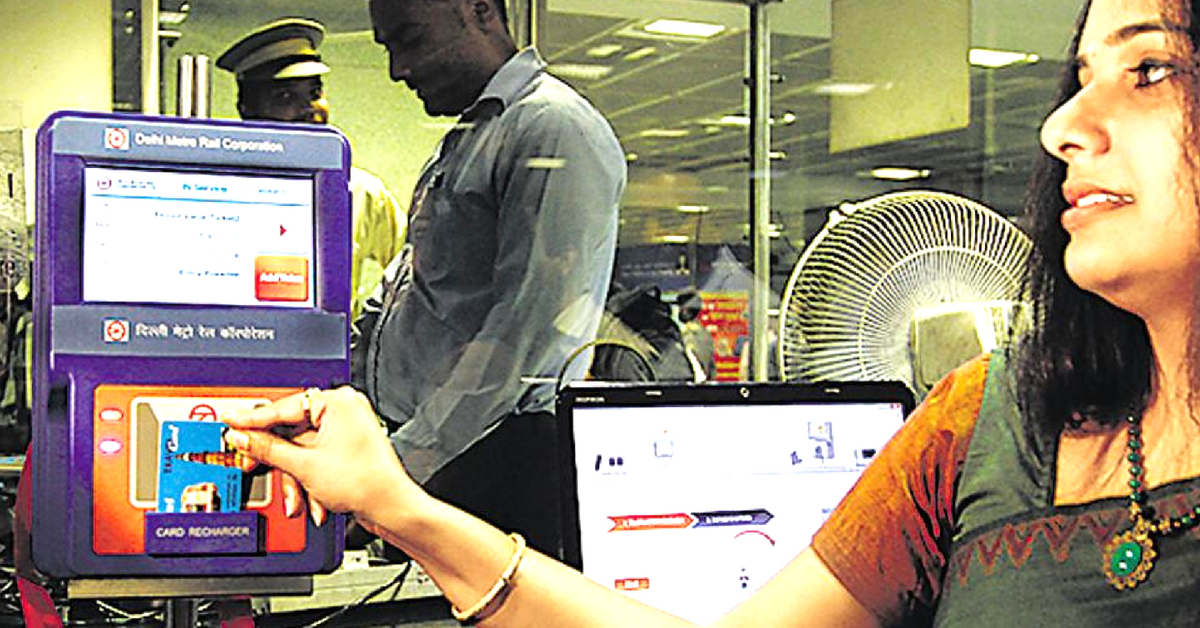Mumbai to Get Integrated Tickets For Seamless Travel: 5 Lesson From 3 Nations!
Mumbai is soon going to overhaul its transport ticketing system like other top cities in the world.

If you commute via public transport in Mumbai, whether the bus, metro or sub-urban locals or even if you prefer private taxi aggregators like UBER, you will now be able to do so by using a single ticket.
A single ticket/token/card for all modes of transport isn’t uncommon. Top cities in the world have had this facility for years.
The Mumbai Metropolitan Region Development Authority (MMRDA), and the Railways will decide on a mode of payment for the proposed integrated ticketing system. According to DNA, Maharashtra CM Devendra Fadnavis and Union Minister for Railways Piyush Goyal, reviewed various projects in Maharashtra.
Here’s how an integrated ticketing system works, and the advantages of such a system.

London, UK:-
London uses the Oyster card, a form of electronic ticket used for Greater London public transportation. Promoted by Transport for London, it is valid on travel modes across the city, including the Underground, the buses, Docklands Light Railway, the London Overground, Tramlink, some river boat services and most National Rail services within the London Fair zones. More than 86 million cards have been used since its introduction in June 2003.
With this card, the number of customers paying cash fares for buses has fallen dramatically, and usage of station ticket offices has fallen.
Here are some interesting statistics:-
1. By June 2010, more than 34 million cards had been issued, and around 7 million are in regular use.
2. More than 80% of all tube journeys and more than 90% of all bus journeys use Oyster cards.
3. Single ticket usage has fallen and constituted only 15% of all bus journeys, and 3% of all tube journeys.
Pasmo, Japan:-
Rechargeable, contactless, smart and electronic, this card is used for public transport in Tokyo.
Every bus and tram network in and around the city accepts this card as a method of payment.
Effectiveness:-
The card turned out to be quite popular, with sales being limited to commuter rail purchases, this one time in April 2017, due to extremely high demand. Around 3 million Pasmo cards were sold, as opposed to the 2-million target.
Paris, France:-
Much like the present Paris Travel Card, the city had an ‘Orange Card’ in the mid-1970s. Offering integrated ticketing through a non-transferable ticket, the Orange card was used for different transport modes, including bus, metro and suburban trains, and at the time, had a significant effect on patronage.
1. The metro patronage increased by 1%.
2. Ridership increased 5% on the RER (Reseau Express Regional)
3. A 5% increase in patronage on suburban buses.
4. A 1% increase in the SNCF (Societe Nationale Des Chemins De Fer Francais), of French National Railway Company.
Booz and Company reviewed the UK-based Passenger Transport Executive Group. The study aimed to find the benefits of integrated ticketing systems. In addition to the above data, Paris Booz also presented some macro findings of using travel cards.
The travel cards usually:-
1. Increased patronage on public transport.
2. Increased passenger satisfaction.
3. Increased revenues for public transport departments.
4. Reduced the transaction and administrative costs for public transport departments.
5. Brought down ticketing frauds.
6. Ensured faster boarding times, where trains and buses were more reliable, faster and ran more frequently.
And most importantly, a common card allows varying data to be collected, so by analysing passenger commute behaviour, urban transport network planning can be done in a better manner. These inputs could benefit Mumbai in charting out a standardised integrated card for public transport.
Incidentally, this step will be implemented in the maximum city in two stages. In stage 1, a special software will be integrated with the existing ticketing system and Mumbai Railway station and metros. The MMRDA (Mumbai Metropolitan Region Development Authority) will be managing this project within Mumbai.
According to India.com, for the second stage, MMRDA will invite tenders to execute single ticketing platforms.
If integrated ticketing comes into play, the advantages for Mumbaikars would be:
1. Lesser wastage of paper, as there would be no need of printed tickets.
2. A reduction in an unnecessary rush at ticket counters.
3. More revenue for the transport authorities to invest in better infrastructure.
4. Smoother public transport machinery that carries the city’s exploding population.
Here’s what we can learn from smart transport cards available in other cities:
1. Improve services in cost-effective ways:-
Usually, when transport departments increase public transport fares over various modes, people do not agree with the individual fare hikes because they can’t see the returns on it. They feel that the hike is not justified.
When transport smart cards are implemented, and fares increase, people will understand that prices must rise on an annual basis through all modes of transport. On the department’s part, it must improve services constantly to ensure effectiveness.
2. Embrace technology holistically:-
To embrace technology fully, the integrated transport card can implement contactless credit and debit payments. This will ensure that fares are directly deducted from a bank account, and riders don’t buy a ticket at all. Technology will also ensure cost reduction. Since the integrated system will close down all other ticketing windows, the initiative might be able to save money.
3. Use the card for purchases outside transport:-
Worldwide, major public transit smart cards can be used to pay for purchases outside stations, including supermarkets, chemists and electronic stores. For example, Japan’s Suica Transport Cards can also be used to pay for Wii U Nintendo eShop digital video games, using the NFC function of the Wii U GamePad. Similarly, if the Indian Smart Card can be used for other purchases such as groceries or movie tickets, it will be very convenient.
4. Draw consumers with schemes:-
If the smart card authorities decide to implement attractive schemes like loyalty points or air miles, like airlines do, consumers will be drawn towards using public transport. If more people join the smart card system, the more revenue the system will earn, and the more it will be able to provide attractive discounts to the public.
5. Launch an application version:-
There are cases where an app version of the smart card can be used to make payments, thus omitting the necessity to carry the card altogether. What’s better, it will prove eco-friendly. Consider this: If you lose the plastic card, but still have the app, why would you purchase a plastic card again?
You may also like:- 8 Suggestions That the World Bank Has for Indian Railways
The integrated ticketing system has been popularly used in Alpha++ cities (London) and Alpha+ cities like Singapore, Hong Kong, Paris, Beijing, Tokyo, Dubai and Shanghai. We are hopeful that its implementation in an Alpha city like Mumbai will help the city’s choked public transport system.
(Edited by Shruti Singhal)
Like this story? Or have something to share? Write to us: [email protected], or connect with us on Facebook and Twitter.

Similar Story

Want to Play a Role in Shaping India’s Climate Laws & Policies? Here’s a One-Stop Guide
Civis, a platform that enables citizens to participate in public consultations in the domain of environment and policy has released Climate Voices. This is a handbook and guide for Indians to participate in environmental law-making and play an active role in shaping our climate policies.
Read more >
If you found our stories insightful, informative, or even just enjoyable, we invite you to consider making a voluntary payment to support the work we do at The Better India. Your contribution helps us continue producing quality content that educates, inspires, and drives positive change.
Choose one of the payment options below for your contribution-
By paying for the stories you value, you directly contribute to sustaining our efforts focused on making a difference in the world. Together, let's ensure that impactful stories continue to be told and shared, enriching lives and communities alike.
Thank you for your support. Here are some frequently asked questions you might find helpful to know why you are contributing?


This story made me
-
97
-
121
-
89
-
167












